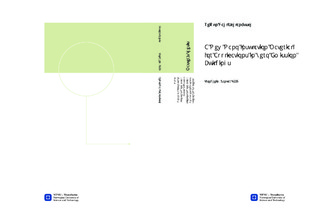A New Nano Insulation Material for Applications in Zero Emission Buildings
Master thesis
Permanent lenke
http://hdl.handle.net/11250/249237Utgivelsesdato
2013Metadata
Vis full innførselSamlinger
Sammendrag
New materials with extremely low thermal conductivities are interesting because they can have architectonic, technical and possibly economic benefits in buildings. A new nano insulation material (NIM) is under development at the Research Centre on Zero Emission Buildings (ZEB). Both the environmental impact of the material and its thermal conductivity are crucial design perspectives for the new material. The objective in this report was to investigate the mechanisms behind these two parameters, and how they can be optimized. The first part of the report addressed the insulation performance. In order to lower the thermal conductivity through, inter alia, the Knudsen effect, the NIM is based on the idea of creating a porous material with extremely small pores. Hollow silica nanospheres (HSN) are produced bottom-up through a template-assisted sol-gel synthesis. To date, there have been no concrete suggestions on how to assemble the spheres to form a porous insulation material – the NIM. The effective thermal conductivity of the NIM, which is already known to be dependent on multiple parameters and advanced physical effects, was found to be dependent also on macroscopic effects in the assembled insulation unit. The second part of the report addressed the environmental performance of the NIM. Life cycle assessment was used to calculate green house gas emissions and energy consumption for the production scenarios close to the current synthesis procedure of the NIM. The life cycle assessment model was constructed with flexibility and can be used for further research. The results are in the order of 60 kg CO2 equivalents and 1400 MJ cumulated energy demand per kg of material, for the scenario where ethanol consumption is reduced by 50% relative to the laboratory consumption. The indirect energy and emission intensity of the raw materials consumed in the NIM production were found to be the main drivers for the environmental impact of the NIM. Especially the chemicals in the sol-gel synthesis. The two parts of the report are connected: Higher environmental costs can be tolerated per unit material thickness, if the thickness can be kept small. The results from the LCA indicate that the environmental impact of the NIM risks being relatively high, even if very low thermal conductivities can be obtained. Hence strict optimization of both insulating and environmental performance is necessary. It was concluded that the most important recommendations for this optimization include avoiding introducing phases with higher thermal conductivities than the HSN in the assembly step and reviewing the consumption of chemicals the silica synthesis procedure.
